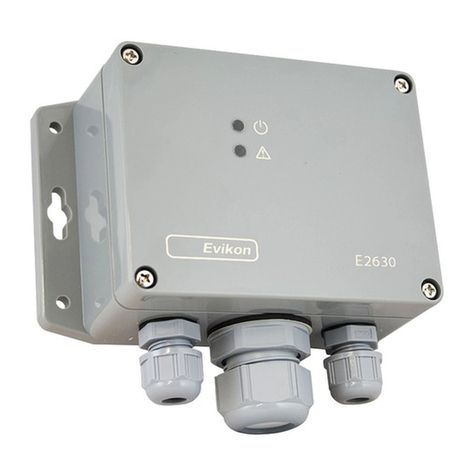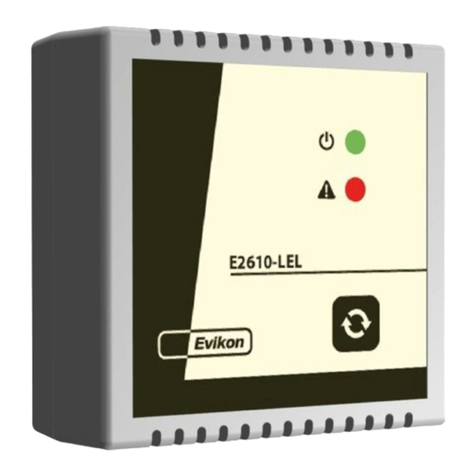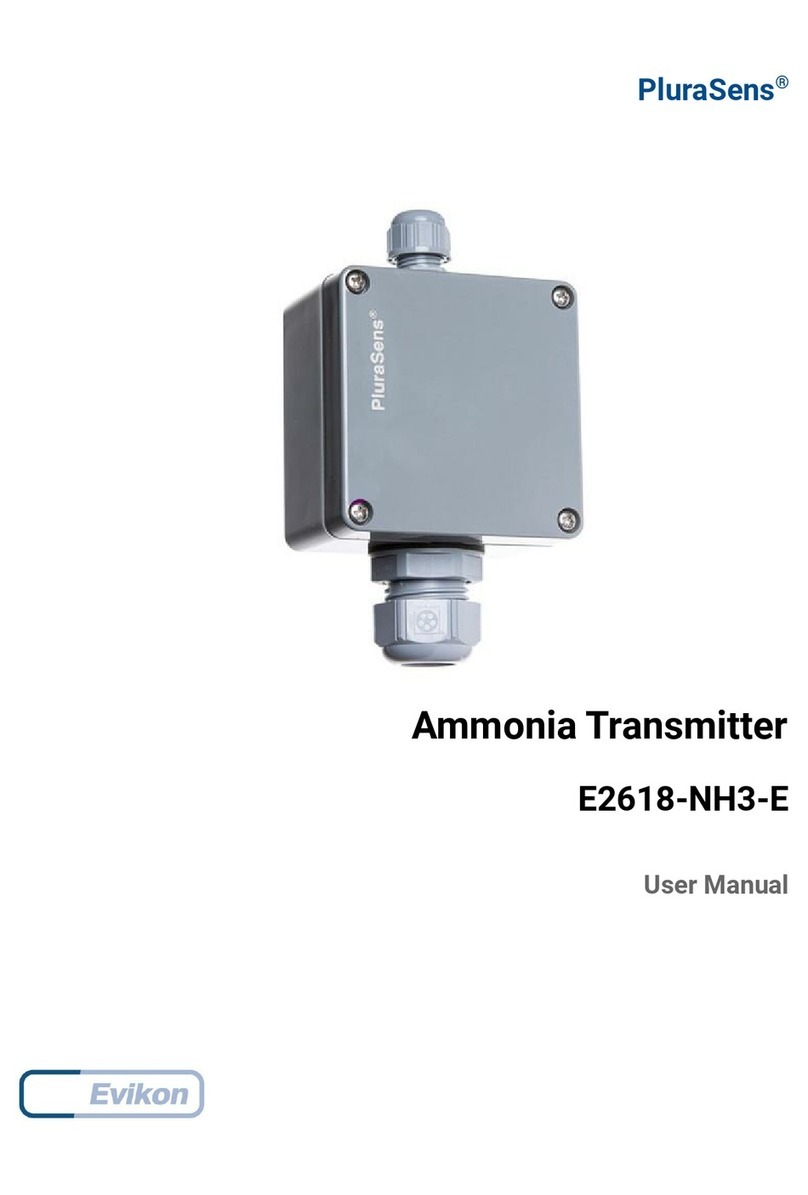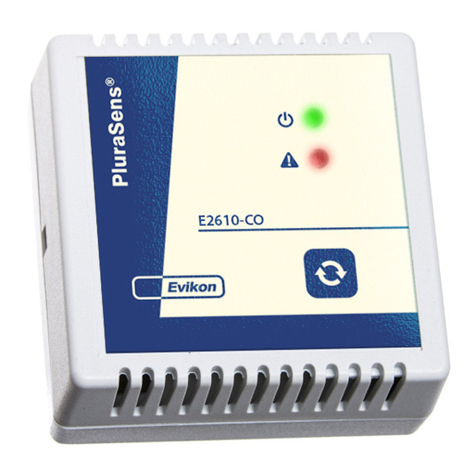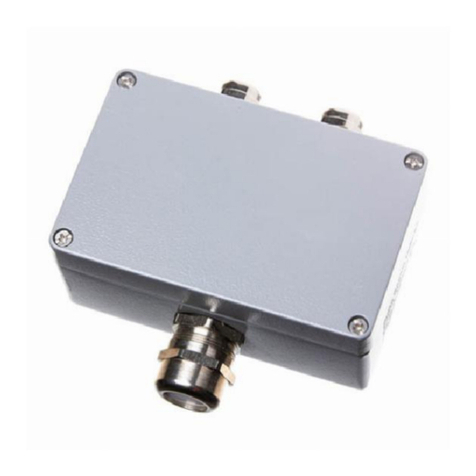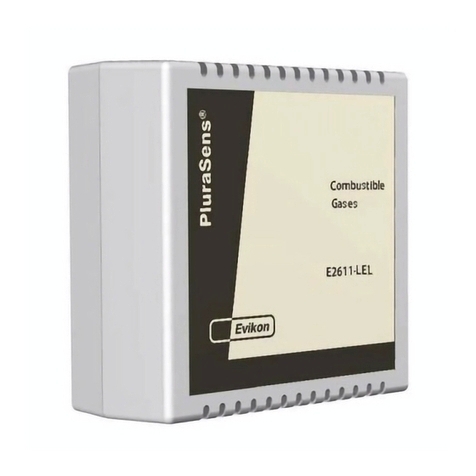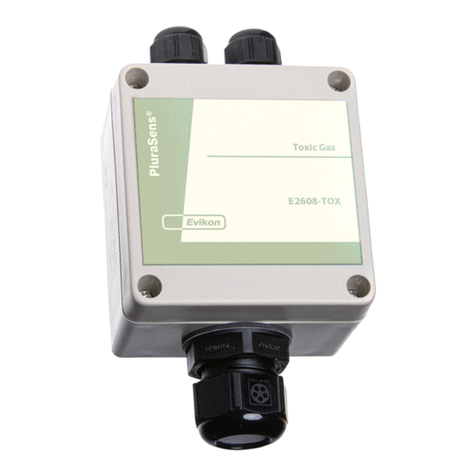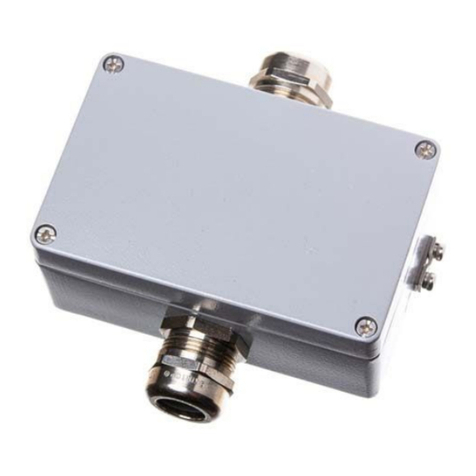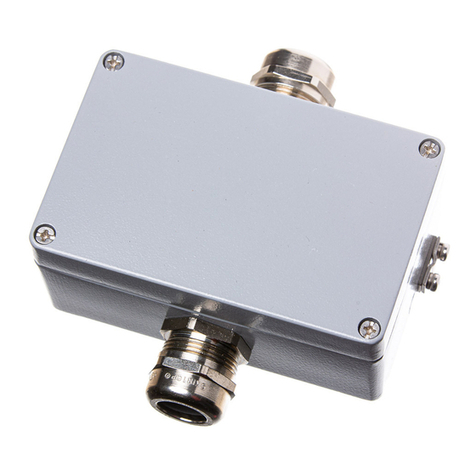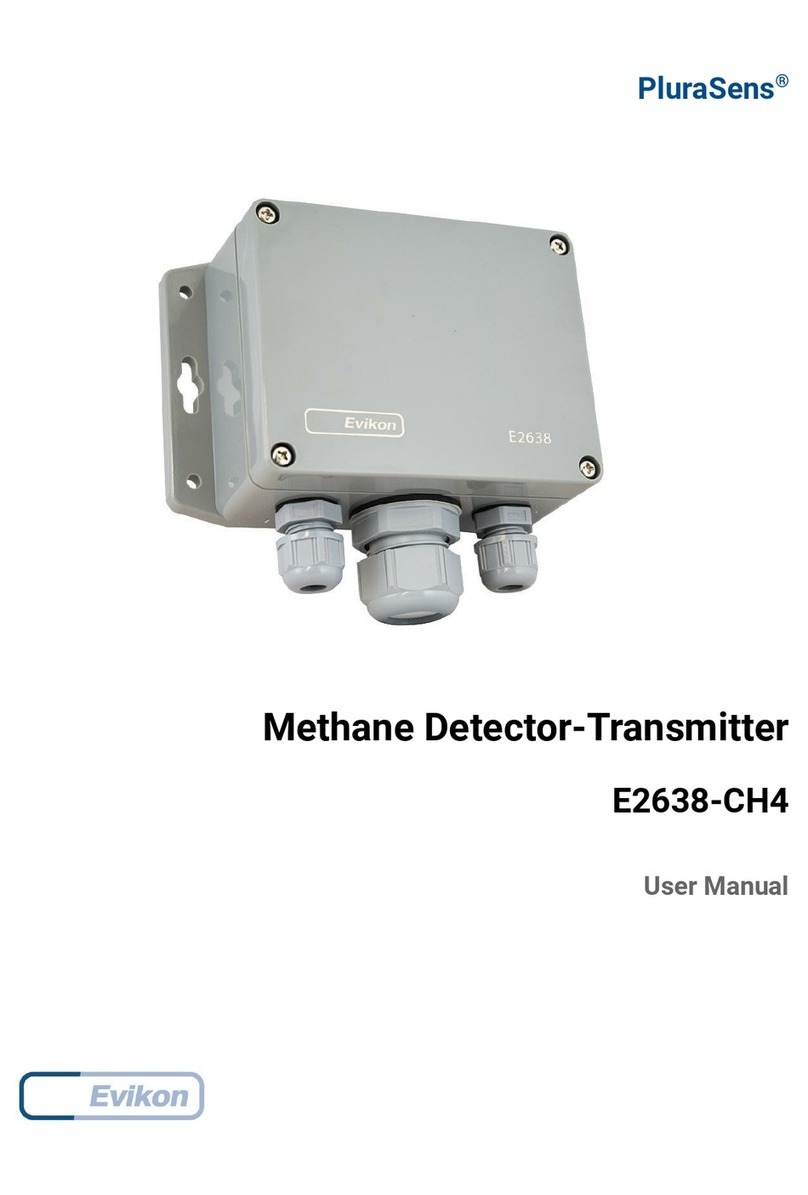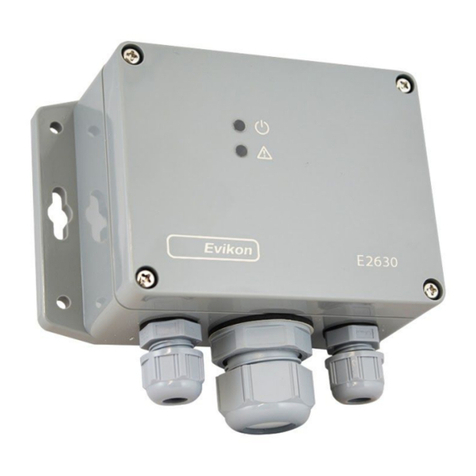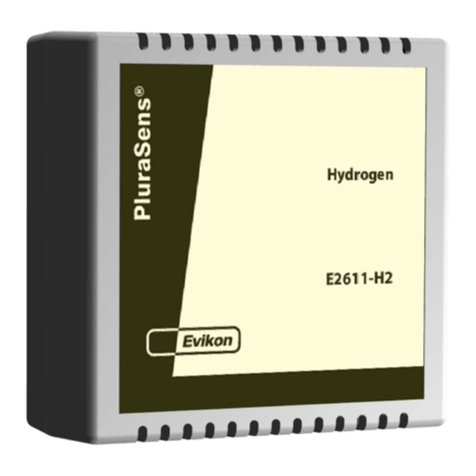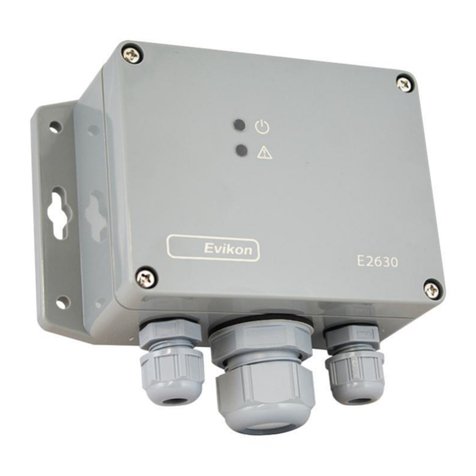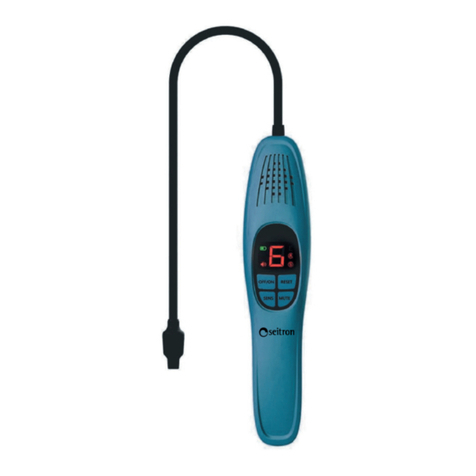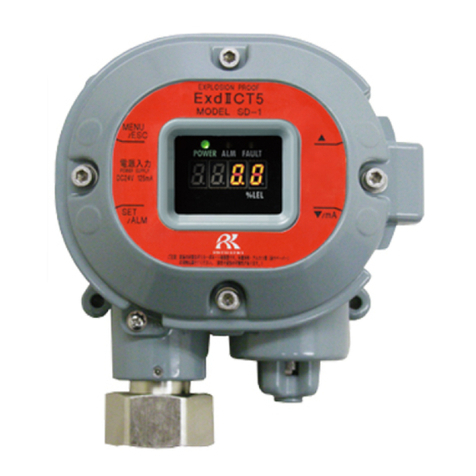
Volatile organic compounds transmitter E2648-PID with photoionization detector is
intended for detection of organic vapors in very low concentrations.
The device belongs to the PluraSens® family of multifunctional measurement
instruments.
E2648 series provides two independent analog outputs OUT1 and OUT2, user-
selectable to 4-20 mA or 0-10 V, proportional either to gas concentration or temperature.
RS485 Modbus RTU digital communication interface allows easy instrument
configuration and integration into various automation systems.
The following features are available as option:
Two relays RE1 and RE2 with closing contacts. Relay outputs can be used to switch
alarm sirens, ventilation fans, shut-off valves or other actuators
Integrated 230 V mains power supply module
Remote probe.
The version of your device is marked on the package.
If symbol is marked on the equipment, consult the documentation for further
information.
PID technology
The gas under investigation diffuses into the sensor’s testing cell, equipped wit a
source of high energy UV light (10.6 eV Krypton lamp) and electrodes. Exposed to
UV light, organic molecules decompose to form ions, which are attracted by the
electrodes. The measured resulting current is proportional to the VOC
concentration.
Safety requirements
Misuse will impair the protection of the equipment.
Always adhere to the safety provisions applicable in the country of use.
Do not perform any maintenance operation with the power on. Do not let water or
foreign objects inside the device.
External circuits connected to the equipment should have sufficient insulation rating
according to the environmental conditions and equipment power
A disconnecting device that is marked as such and easily accessible should be
included in the installation of this product.
Operating conditions
The device should be used in explosion-safe areas at the temperature in the range
-40ºC to +65ºC, 15 to 95% RH without condensation and under ambient pressure
0,9...1,1 atm. Avoid strong mechanical shock, vibrations or EMI. Avoid corrosive
atmosphere and areas highly contaminated with dust, oil mist etc. Keep the device away
from direct sunlight.
Mounting dimensions
Installation and connections
Before proceeding with the installation it is mandatory to read carefully the Safety
requirements section and make sure to comply with all listed instructions. During the
installation of the detector the following points must be considered:
application (air quality control or leakage detection);
properties of the space under investigation (room geometry, direction and velocity of
air flows etc);
detected gas (relative density to air, temperature, whether the gas is flammable, or
toxiс, or oxygen displacing, whether the gas is heated);
the device should be accessible for maintenance and repair.
Solvent vapours are heavier than air and tend to sink. Do not take the gas samples for
investigation from too high.
The device is fixed on the wall using two holes located outside the sealed area of the
device(see dimensional drawing in the previous section).
Connections
1. Unscrew four lid screws and detach the lid from the device.
2. Attach the device to the wall. (This step may be done after the step 3, consider
your convenience).
3. Use two M16 cable glands to let in the cables of the power supply and of the external
devices. Without turning on the power, plug the power cable and connect the
analog/relay outputs and/or digital interface terminals to the necessary devices
according to the relevant connection diagram.
The screwless quick connect spring terminals on the E2648 series devices are
suitable for a wide range of wires with cross-section 0,2...1,5 mm2. We recommend
to strip the wire end by 8...9 mm and use the wire end sleeves.
To connect the wire, insert the wire end into terminal hole. To disconnect, push the
spring loaded terminal lever, pull the wire out, and release the lever.
Use twisted pair cable, e.g. LiYY TP 2×2×0,5 mm2or CAT 5, to connect the device
to RS485 network. Use one pair for A and B wires to connect the transmitter to
Fieldbus network. Respect polarity.
The type of each analog output can be independently changed between 4-20 mA
and 0-10 V with jumpers J1 (OUT1) and J2 (OUT2). With closed jumper the output
is 0-10 V, with open jumper the output is 4-20 mA. Power restart is required after
changing the position of the jumpers.
By default both outputs OUT1 and OUT2 are assigned to gas concentration. The
device has built-in temperature sensor which may be tied to any of the outputs. The
built-in temperature sensor is intended for temperature compensation. E2648 series
devices are not meant for ambient air temperature measurement.
We recommend to set the difference between the upper and bottom limits of the
output scale not narrower than 20% of detection range (for CO detectors the scales
down to 5% of range are allowed). In any case, do not set the output scale below
the tenfold resolution of the device.
NOTE The outputs are not galvanically isolated from 24 V power supply and share
common 0V. Allowed load resistance limits are stated in Specifications table. To power
the instrument from an external 24 VDC source, connect terminals 0V and +U to the
source. If the integrated mains power supply module is used, connect terminals Land N
to the mains.
NOTE Actuator short-circuits should be avoided, to protect the instrument relays
use external fuses or safety switches.
4. Turn on the power. The sensor heating up takes ca. 60 seconds after switching on.
The operating status is indicated by the LED on the PCB of the device. The LED
response to different processes is presented in the table below.
Sensor absence or malfunction
Blinking 0.5 Hz (90% off, 10% on)
Blinking 1 Hz (50% on, 50% off)
Blinking 2 Hz (50% on, 50% off)
The signal is modulated with short on-off pulses,
even single Modbus cycle is traceable*
5. Make sure that the device is properly installed, the external devices connected,
power on and control LED is constantly lit. Make certain that the cable glands are
properly tightened to ensure the conformity to IP66 protection class. Place the lid
back and fix it with the screws. The device is ready to use.
Configuring
Detectors- transmitters E2648 share all functionalities of the PluraSens®multifunctional
platform. The features and options include:
- digital output change rate limiting filter
- digital integrating (averaging) filter
- temperature measurement channel with internal sensor
- free assignment of each analog output to chosen parameter
- flexible setting of analog output scales for each output
- output shift and slope adjustment for calibration
- free assignment of each of two relays to chosen parameter
- several relay control logic modes
- switch delays and minimum on/off state durations for each relay
A standard configuration kit includes a USB-RS485 converter and a software pack.
Please contact your Seller for more information.
E2648 version without relays
E2648R version with relays

